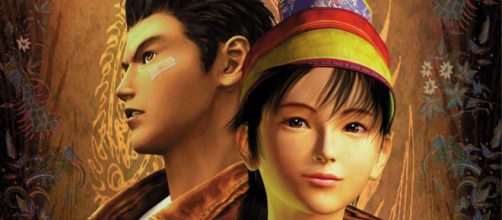It's been almost two decades since Yu Suzuki and sega revolutionized the gaming landscape with the landmark Sandbox RPG, "Shenmue" for the Dreamcast. The most expensive game of its release, 'Shenmue' boasted a living breathing world featuring real time weather effects, over 1,000 explorable rooms, 300 characters to interact with, and an epic tale of revenge, friendship, and familial bond.
Unfortunately, its ambition greatly outweighed its performance. After two installments, the series laid dormant for years. However, following the highly successful Kickstarter campaign for a sequel, Sega has announced a re-release of the first two installments for modern consoles.
Looking for sailors.
The story of "Shenmue" revolves around a young man named Ryo, whose father is murdered before his very eyes. The assailant, a man named Lan Di, defeats Ryo in combat, escapes with a mysterious artifact, and leaves him to cradle his dying father. Ryo vows revenge on Lan Di and embarks on an epic journey to find and defeat him. In the first game, players are given a time limit between November 29th, 1986 to April 15th, 1987. Should the player not complete the game within the allotted time, Ryo's story reaches a sad conclusion.
The gameplay consists of talking to characters, fighting hostile enemies with a system similar to "Virtua Fighter," and quick-time events where the player must press the buttons that are prompted on the screen.
In addition to the main story missions, there's many things the player can do in the game. The world Ryo explores features shops that open and close, characters with daily routines, and buses that follow a strict schedule. Ryo can also get a job and earn money that can be used in arcades to play complete versions of classic Sega titles such as "Space Harrier" or buy collectible figurines of "Sonic the Hedgehog."
Sega's swan song
The sequel, "Shenmue II," follows a similar pattern: Ryo arrives in Hong Kong in search of clues regarding his father's murder and the mysterious mirrors. This time, players are given a time limit between April 1987 through the end of June. Though the basic gameplay remained the same, the sequel added new features, such as the ability to fast forward the in-game clock, ask pedestrians for directions, and new means for players to earn money such as wrestling or street brawls.
Shortly after its initial Dreamcast release, Sega would abandon the hardware business and develop for other consoles. In addition to the Dreamcast, "Shenmue II" saw release on the original Xbox alongside other Sega titles such as "Jet Set Radio Future" and "Panzer Dragoon Orta."
Re-release
Finally, a whole new generation of gamers will be able to see what all the fuss was about when Sega releases high definition ports of the first two titles complete with new graphics, controls, and the option to select either English or Japanese voice acting. This will also give players the opportunity to be brought up to speed in time for the upcoming "Shenmue III."


